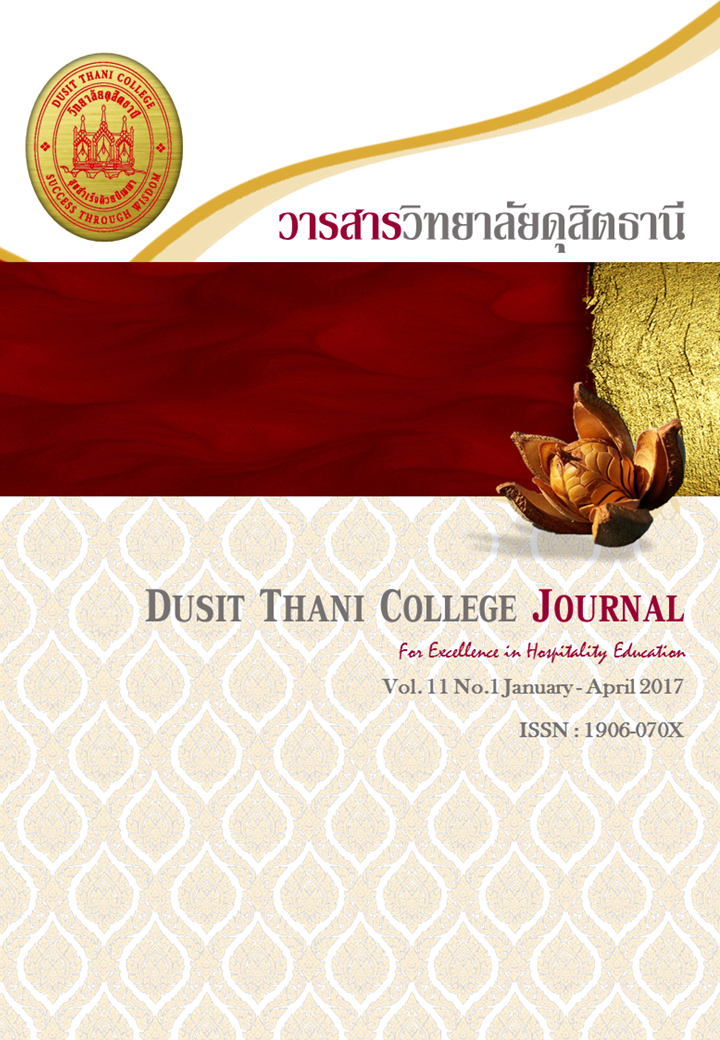Roles and Aspects of Human Resource Management Towards a Strategic Partner
Main Article Content
Abstract
Due to the conditions and competition in the business world has to change over time. Organizations need to change tactics to survive. The agency which is expected to support the organization is Human Resource Management. It has to play an important role in the development of the organization. The purpose of this paper is to review the basic knowledge about the conceptual and the theory that contribute to the strategic partnership of Human resource Management. According to literature reviews, the strategic partnership of Human Resource Management consists of 4 roles, which are 1) the role of strategic partnership 2) the roles of change agent 3) the role of administrative experts, and 4) the roles of employee champion, which the combination of four roles leads to the efficient strategic partnership of the organization.
Article Details
Article Screening Policy
- All research and academic articles to be published must be considered and screened by three peer reviews in the relevant field / article.
- All articles, texts, illustrations and tables published in the journal are the personal opinions of the authors. Editors don't always have to agree. And no responsibility whatsoever is the sole responsibility of the author.
- The articles to be published must never be published. Where did you first publish? And not in the consideration of other journals If the audit found that there has been a duplicate publication It is the sole responsibility of the author.
- Any article that the reader sees as being plagiarized or impersonated without reference. Or mislead the work of the author Please let the journal editor know it will be your greatest blessing.
References
เนตร์พัณณา ยาวิราช. (2552). ภาวะผู้นำ และผู้นำเชิงกลยุทธ์. กรุงเทพฯ : ทริปเพิ้ล กรุ๊ป.
ประเวศน์ มหารัตน์สกุล. (2548). การจัดการทรัพยากรมนุษย์แนวใหม่. พิมพ์ครั้งที่ 4. กรุงเทพฯ : สมาคมส่งเสริมเทคโนโลยีไทยญี่ปุ่น.
__________. (2554). การจัดการทรัพยากรมนุษย์มุ่งสู่อนาคต. พิมพ์ครั้งที่ 3. กรุงเทพฯ : พิมพ์ตะวัน.
พิภพ อุดร และ วิทยา ด่านธำรงกุล (2557). 100 ข้อคิดบริหารคน จาก 100 ยอดนักบริหารไทย. กรุงเทพฯ : สถาบันทรัพยากรมนุษย์ มหาวิทยาลัยธรรมศาสตร์.
สุธรรม รัตนโชติ.(2552). พฤติกรรมองค์การและการจัดการ. กรุงเทพฯ : ท้อป.
Bas, A.. (2012). Strategic ฝ่ายทรัพยากรบุคคล Management : Strategy Facilitation Process by ฝ่ายทรัพยากรบุคคล. Procedia-Social and Behavior Sciences 58: 313-321.
Caldwell, R. (2003). “The changing roles of personnel managers: old ambiguities, new uncertainties”, Journal of Management Studies, 40(4), 983-1004.
Conner, J. and Ulrich, D., (1996). “Human resource roles: creating value, not rhetoric”, Human Resource Planning, 19(3), 38-49.
Jeanette, L. (2009). “From administrative expert to strategic partner”, Employee Relation, 31 (2): 182-196.
Joseph, C. S. and Gil. B.. (2015). “How nonprofit organizations can ensure stability and sustainability through succession planning: make HR a strategic partner in the process”. Strategic Review, 14: 6.
Martell, K. and Corroll, S.,(1995). “How strategic is HRM?”, Human Resource Management, 34 (2), 253-267.
Matthew, B.. (2006). “Making the HR business partner transition at Vodafone”. Strategic HR Review, 5(3), 8-9.
Pitts, R. A. and Lei, D. (2000). Strategic Management: Building and Sustaining Competitive Advantage. 2nd USA: South-Western Publishing.
Peretti, J.M.. (1998). “La performance de la function resources humaines: 1978-1998”, Economies et Societe, Sciences de Gestion, 8, 479-493.
Scherhorn, J. R.. (2002). Management. 7th ed. USA: John Wiley & Sons.
Schuler, R.. (1992). “Strategic human resource management: linking the people with the strategic needs of the business”, Organizational Dynamics, 21(1),18-31.
Ulrich, D.. (1998). Delivering Results. A New Mandate for Human Resource Professionals, Harvard Business School Press, Boston.
__________.(1997). Human Resource Champions: The Next Agenda for Adding Value and delivering Results, Harvard Business School Press, Boston.
__________. Human Resource Champions. Boston. Harvard Business Press. 1996.
Ulrich, D. and Brockbank, W. (2005).“Role call”, People Management, 111(2), 24-28.
__________.(2005). The HR Value Proposition, Harvard Business School Press, Boston.
Ulrich, D. Brockbank, W. Yeung, A.K. and Lake, D.G. (1995). “Human Resource Competencies: an empirical assessment”, Human Resource Management, 34(4), 473-495.
__________. (2009). “HR’s strategic panacea”, Human Resource Management International Digest, 17,29-31.


